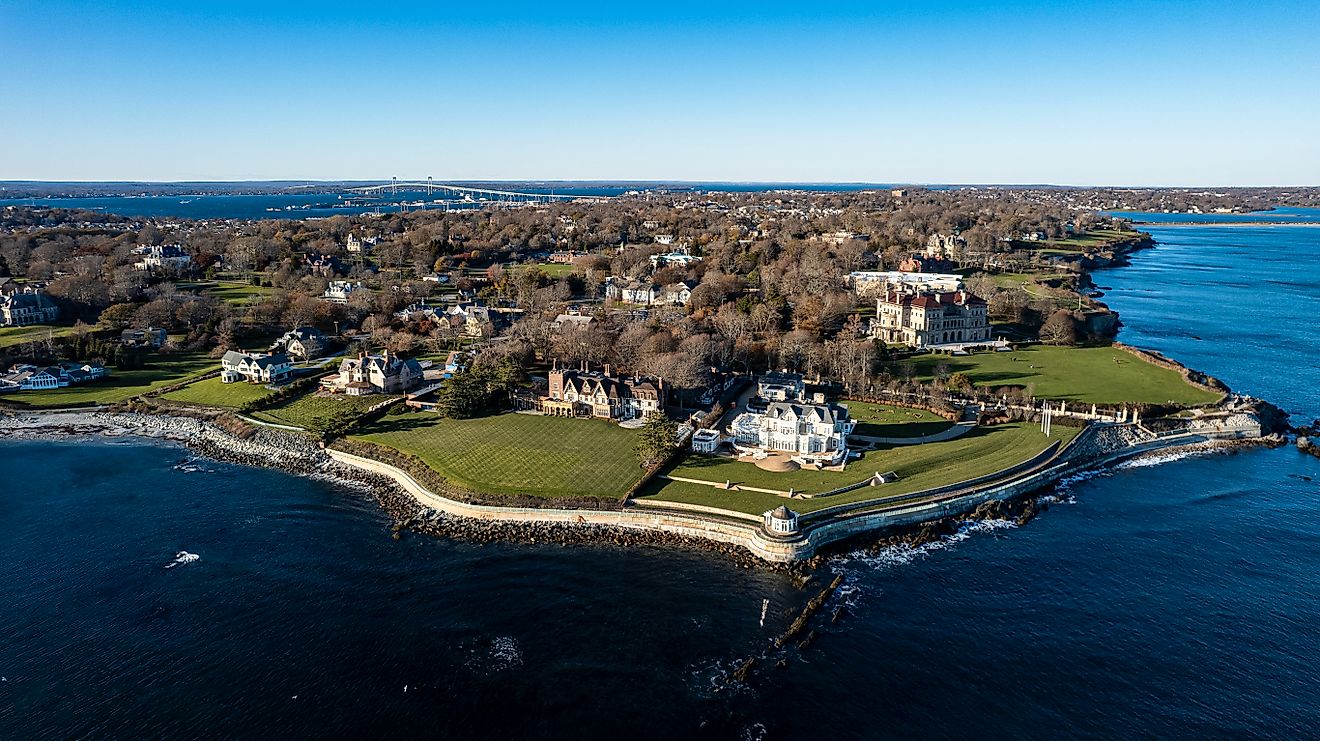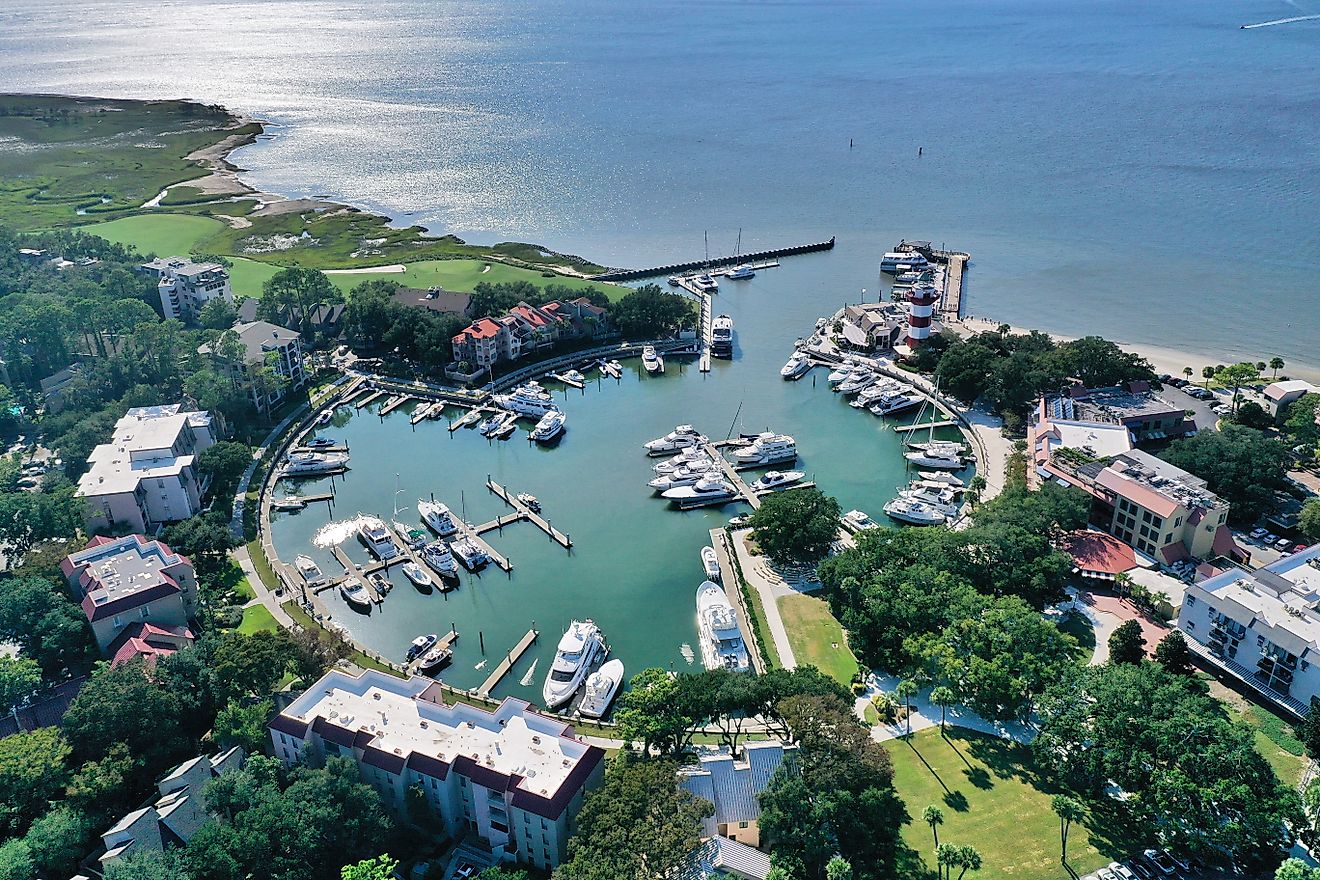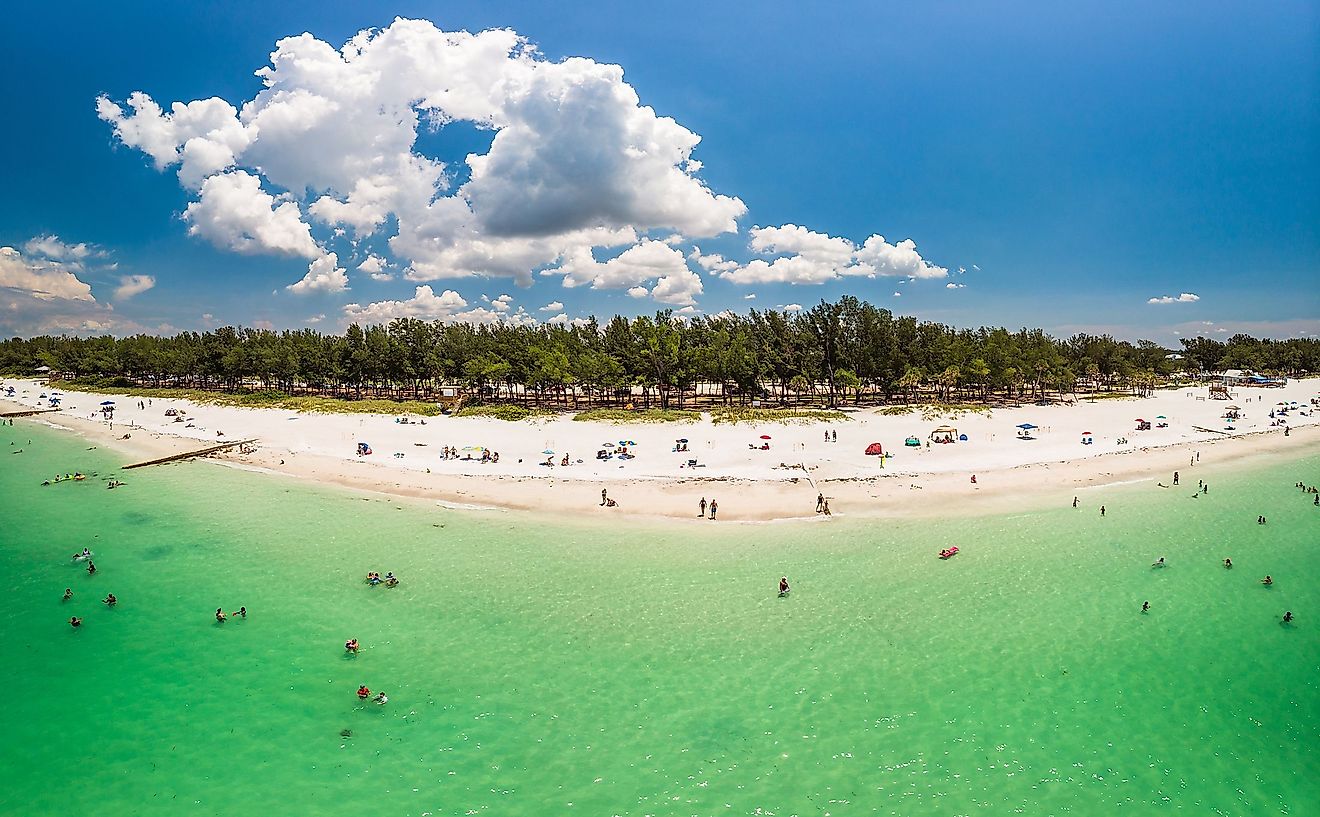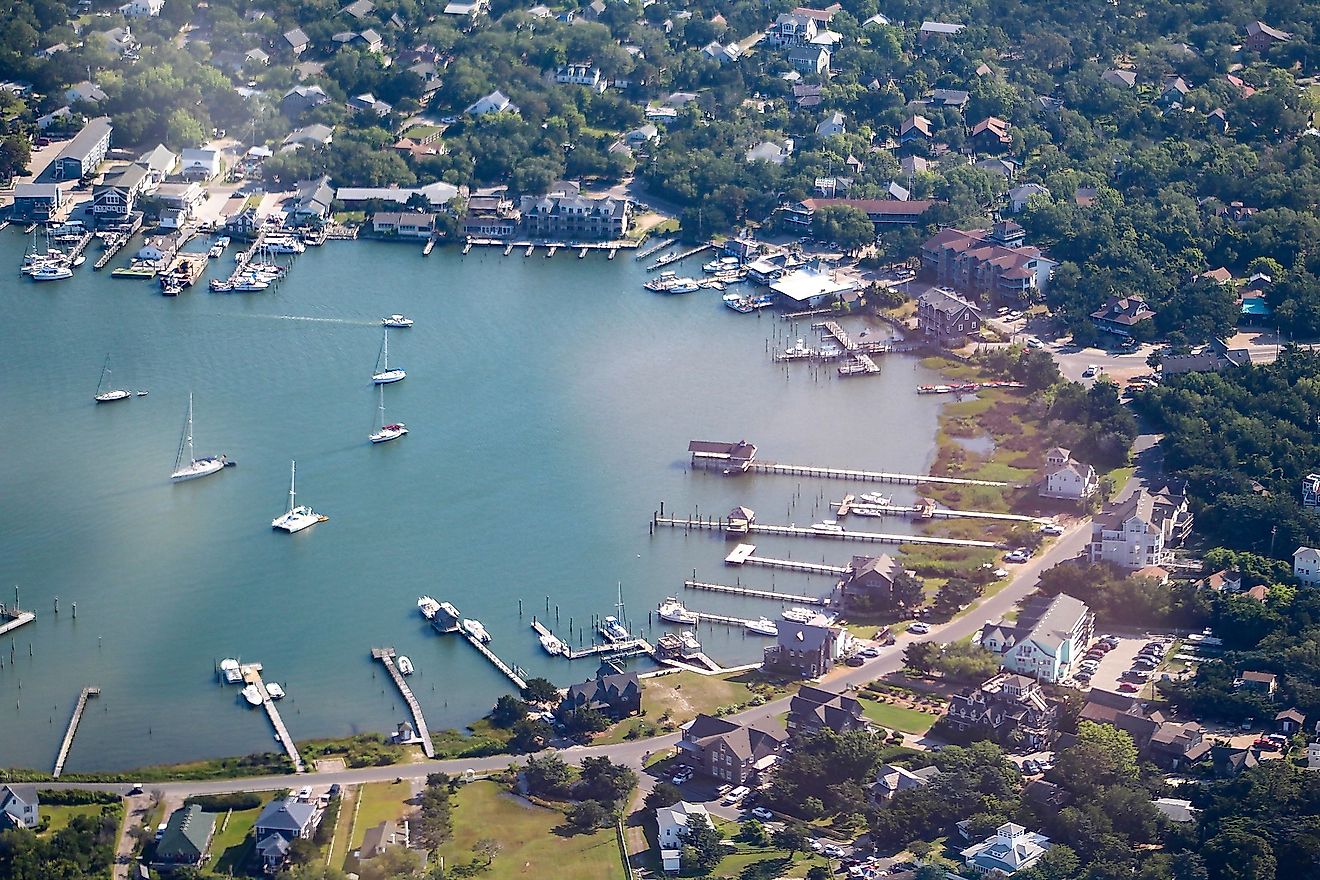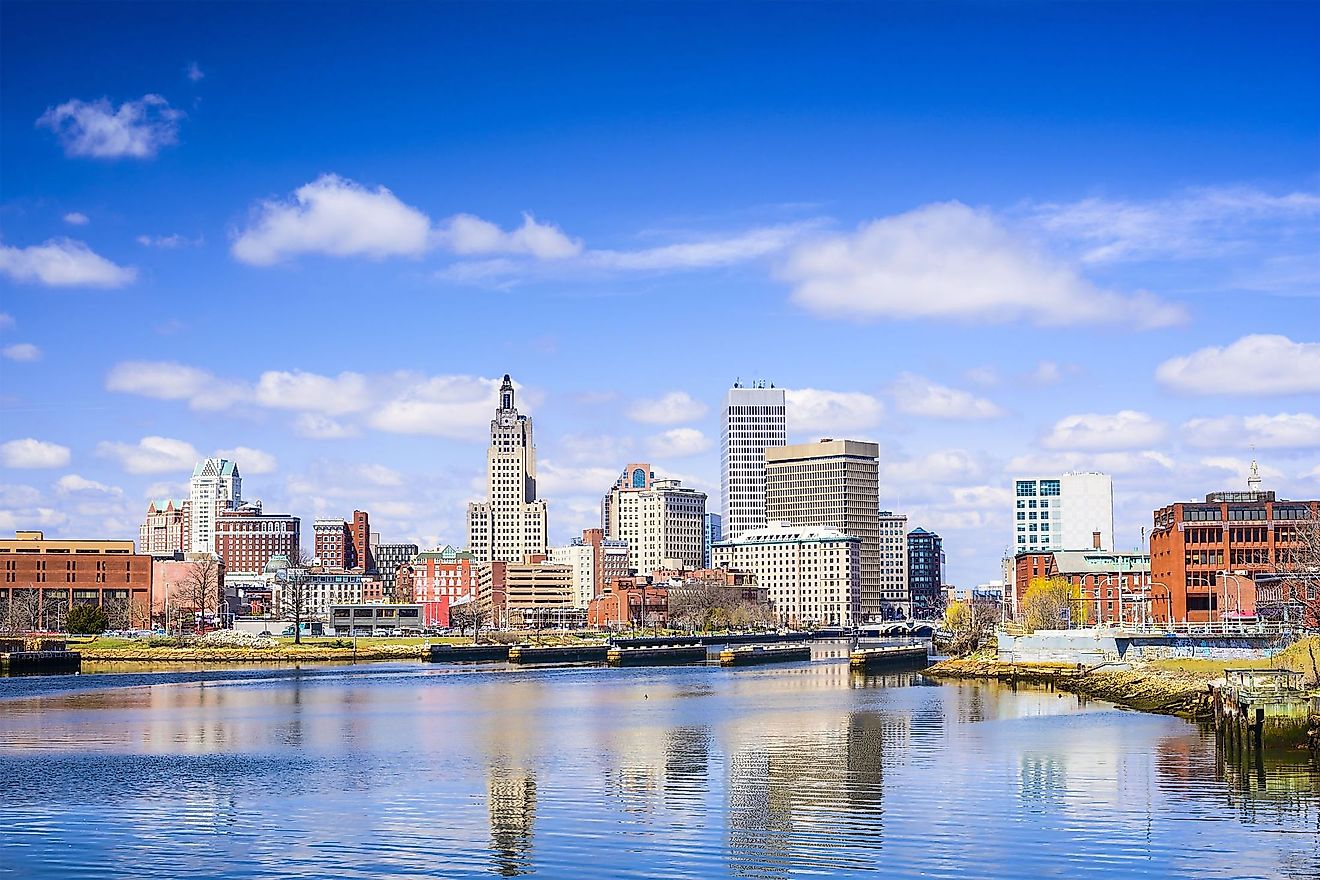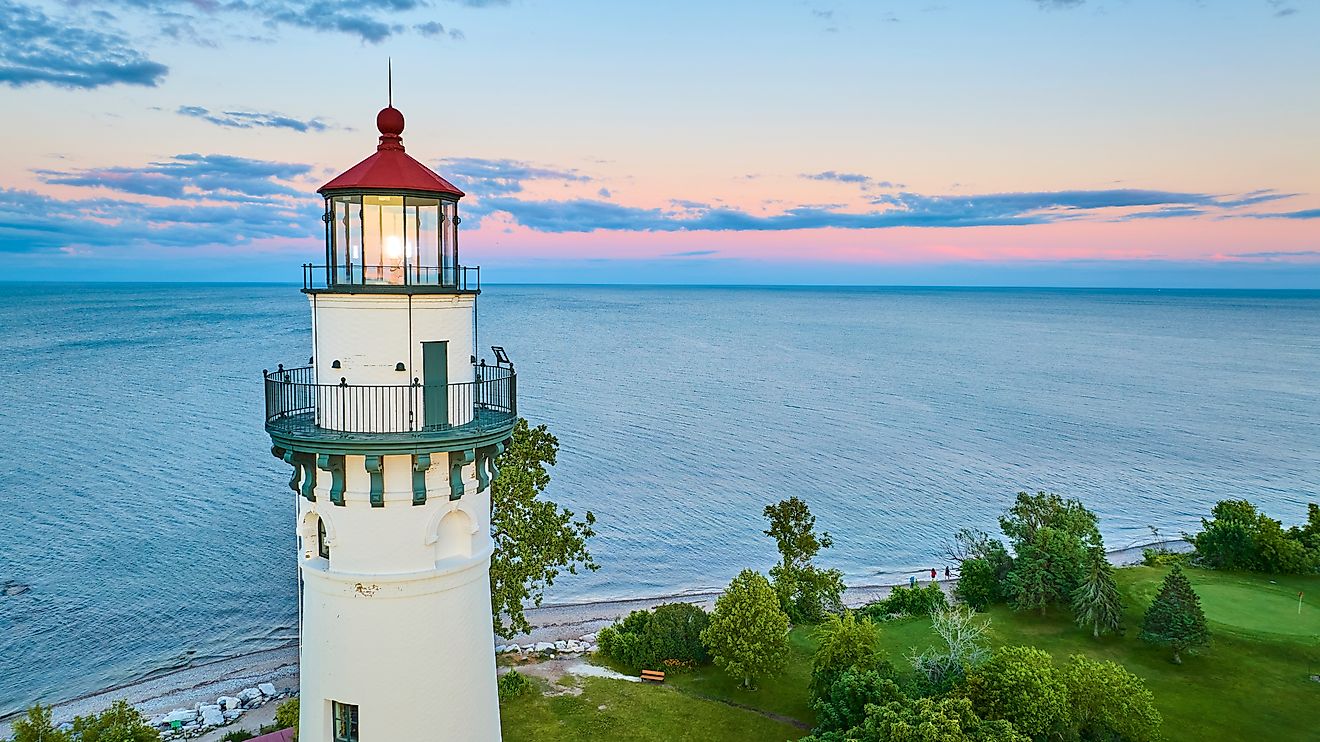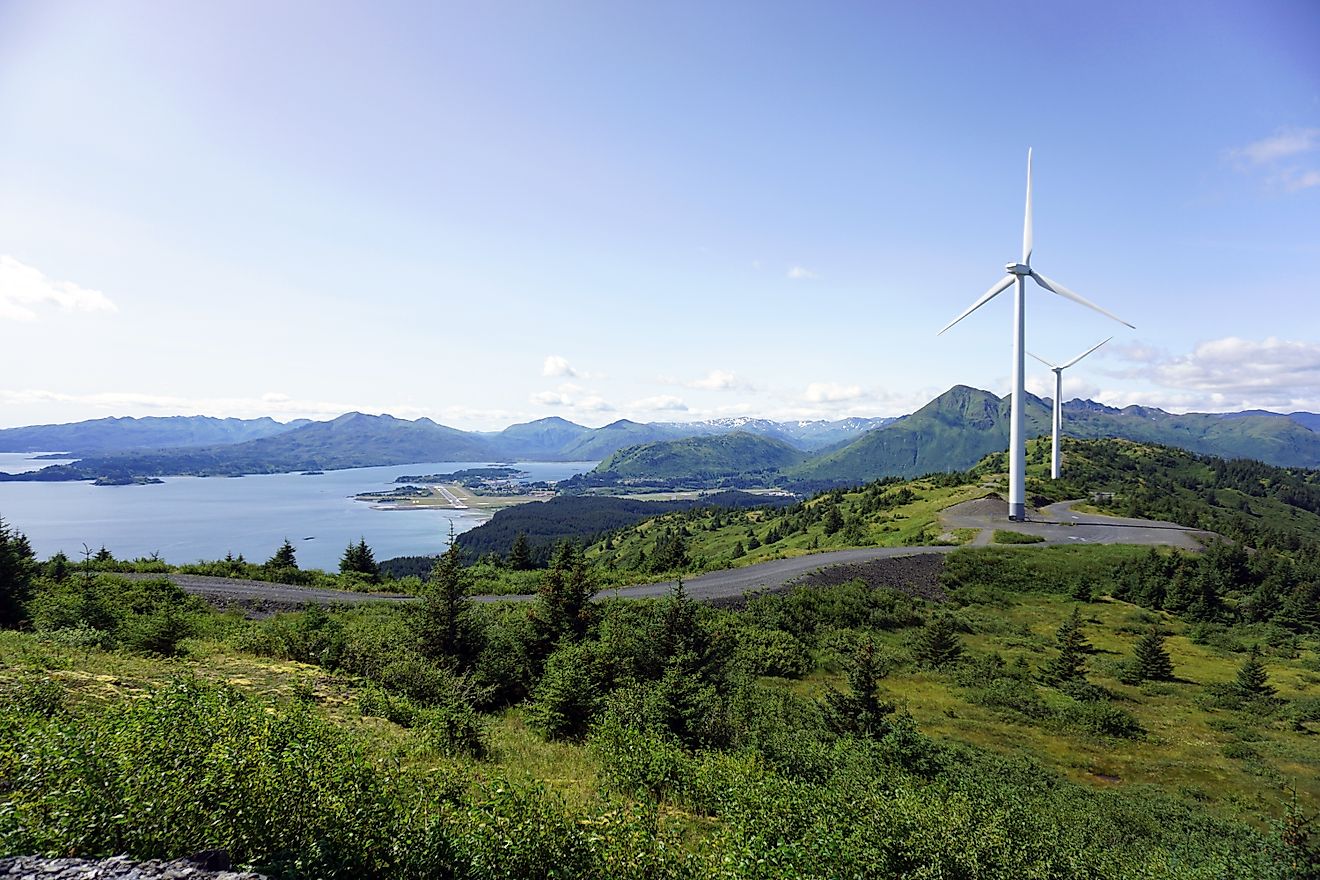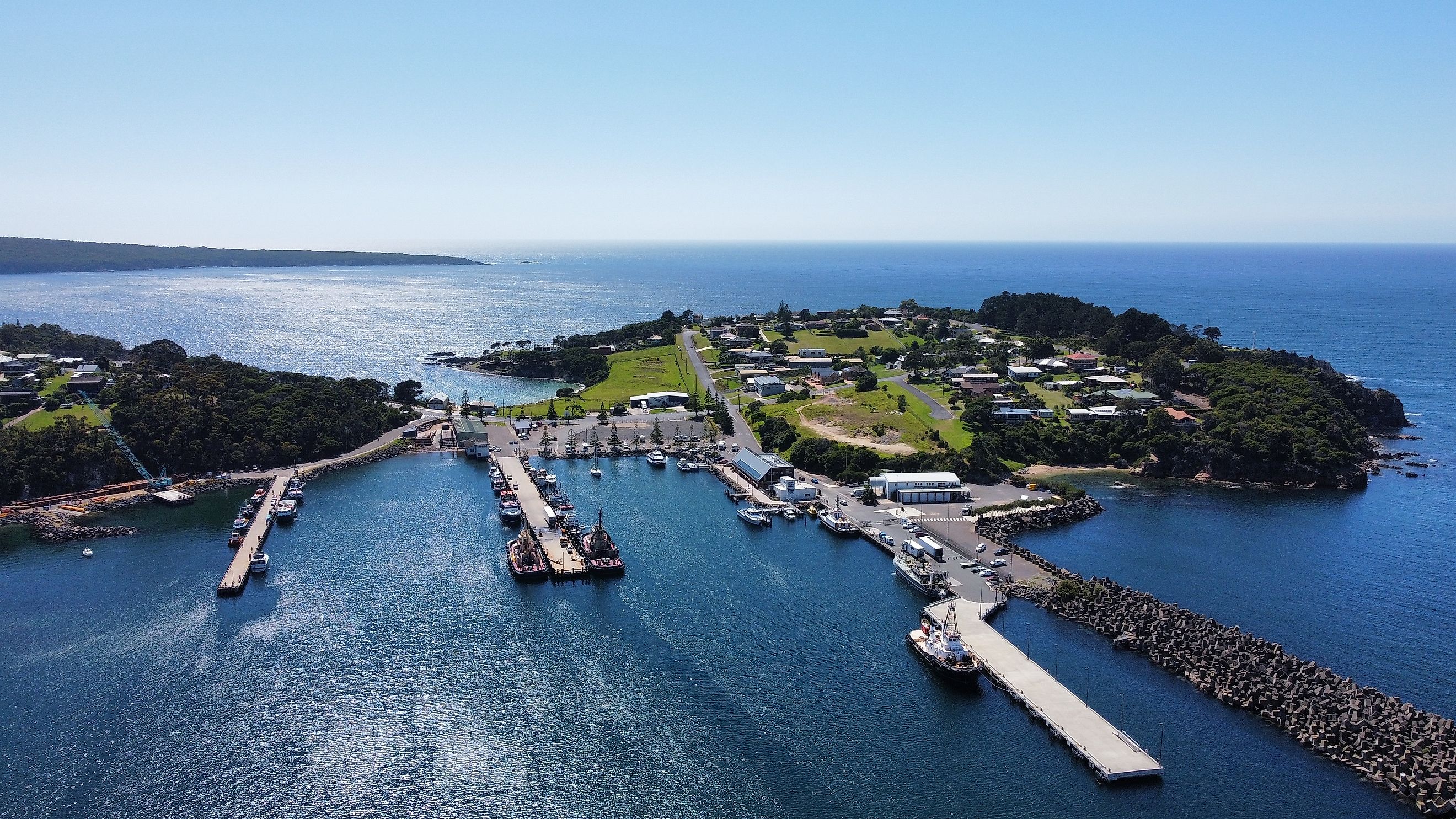
Mackinac Island, Michigan
Situated in the heart of Lake Huron between Michigan's Upper and Lower Peninsulas, Mackinac Island is a rare gem in America’s Midwest. Covering just a little over 4 square miles, this picturesque island offers a rich blend of Indigenous heritage, colonial history, Victorian charm, and pristine natural beauty. Known for its ban on automobiles, preserved architecture, and famous fudge, Mackinac Island is more than a summer destination, it's a step back in time.
A Sacred and Storied Past
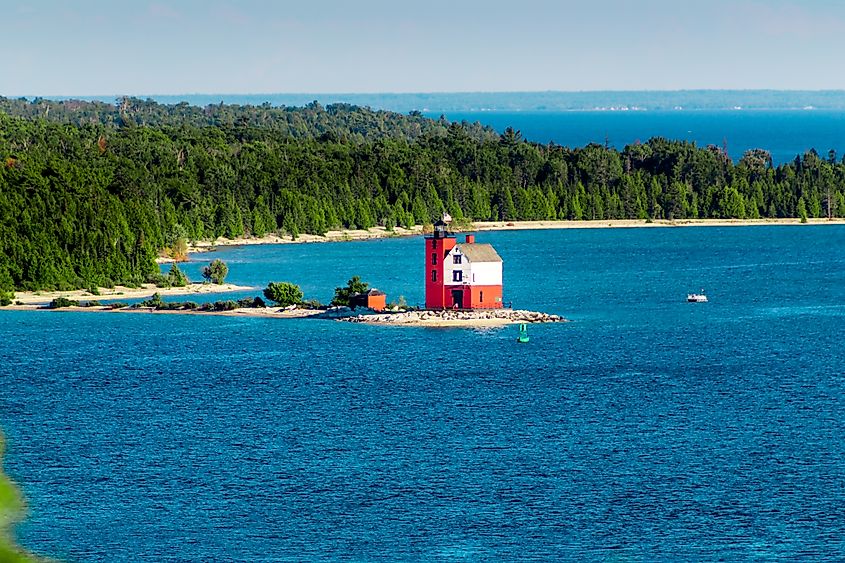
Long before ferries brought visitors from Mackinaw City or St. Ignace, Mackinac Island was home to the Anishinaabe people, including the Odawa and Ojibwe. The island's name, "Mitchimakinak," meaning "Great Turtle," reflects its shape and spiritual significance. In Anishinaabe legend, Mackinac was the first land to emerge after the Great Flood, created by the Great Hare, Michabou, and it became the dwelling place of Gitche Manitou, the Great Spirit.
European interest began in the 17th century with French missionaries and fur traders. Fort Mackinac, built by the British in 1780, stands as a reminder of the island's role in the American Revolutionary War and the War of 1812. After being transferred to the United States through the Treaty of Paris and then the Treaty of Ghent, Mackinac Island became an important federal fur trade hub and later a military outpost.
Victorian Elegance and Preservation
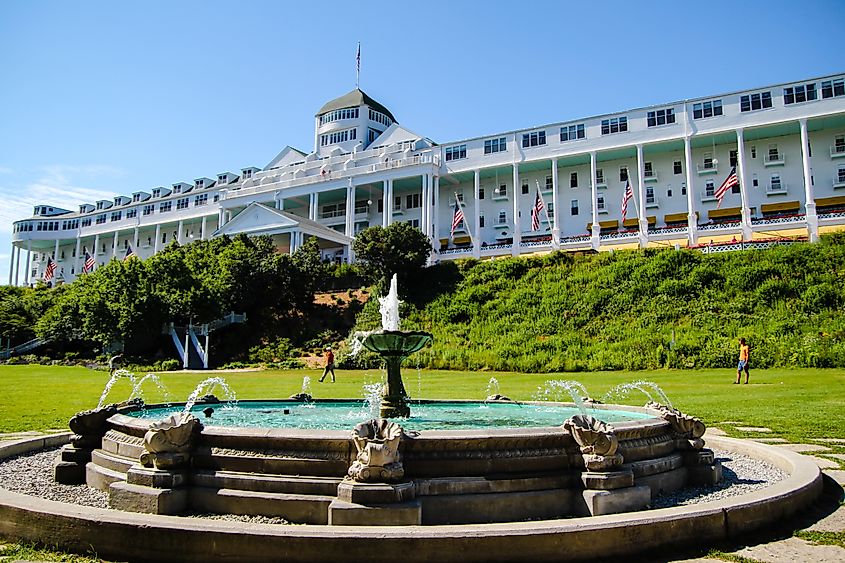
The late 19th century marked the transformation of Mackinac into a fashionable retreat for wealthy Midwesterners. Grand hotels were built, including the iconic Grand Hotel with its sweeping front porch—the longest of its kind in the world. Victorian summer homes still line the bluffs, maintained in their historic glory thanks to strict preservation laws.
In 1895, when the federal government transferred ownership of the land to the state, Mackinac Island State Park was born. Today, over 80% of the island is protected land, preserving both its natural environment and cultural landmarks.
A Town Without Cars
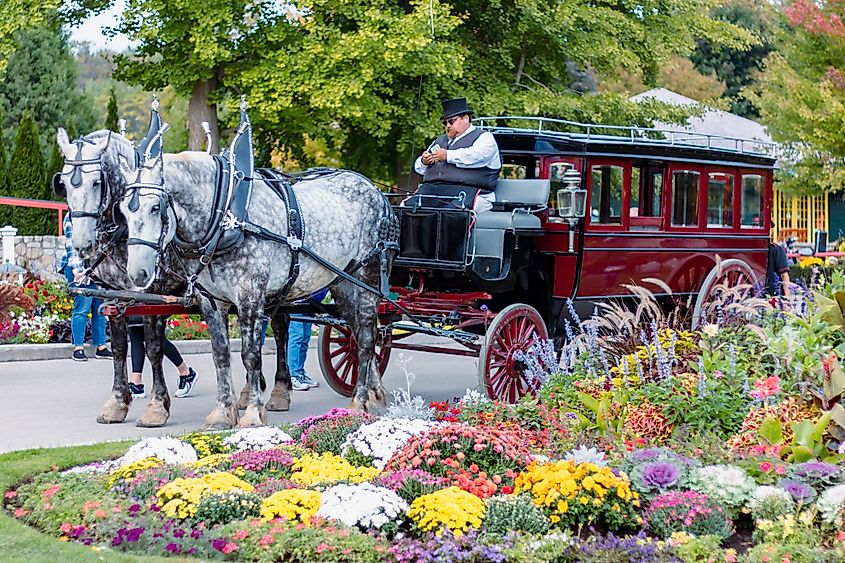
One of Mackinac Island's most defining features is its ban on motorized vehicles. Enacted in 1898 to protect residents and horses from noisy and dangerous automobiles, the ban remains in place. Transportation today is by foot, bicycle, or horse-drawn carriage. Even emergency services rely on limited motorized vehicles or snowmobiles in winter.
This absence of traffic adds to the island's idyllic atmosphere. Visitors arrive by ferry or small aircraft and traverse the island along M-185, the nation’s only state highway without cars. Circumnavigating the island on bike or carriage offers unparalleled views of rocky shorelines, historic sites, and untouched forest.
Natural Wonders and Geological Treasures
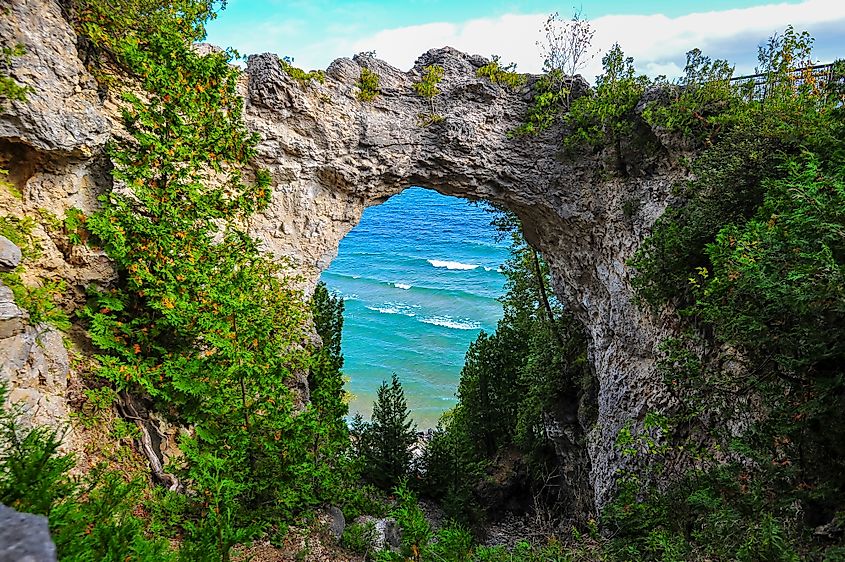
Mackinac Island was shaped by glaciers and lake erosion, forming dramatic limestone features such as Arch Rock, Sugar Loaf, and Skull Cave. Fort Holmes, the island's highest point at 890 feet above sea level, offers panoramic views of Lake Huron and the Straits of Mackinac.
Ecologically, the island supports more than 600 species of vascular plants, thriving forests of birch and maple, and wildlife including foxes, squirrels, and migratory birds. Its diverse habitats include bogs, cliffs, and boreal forest, much of which is accessible through a network of hiking trails.
Historic Sites and Museums
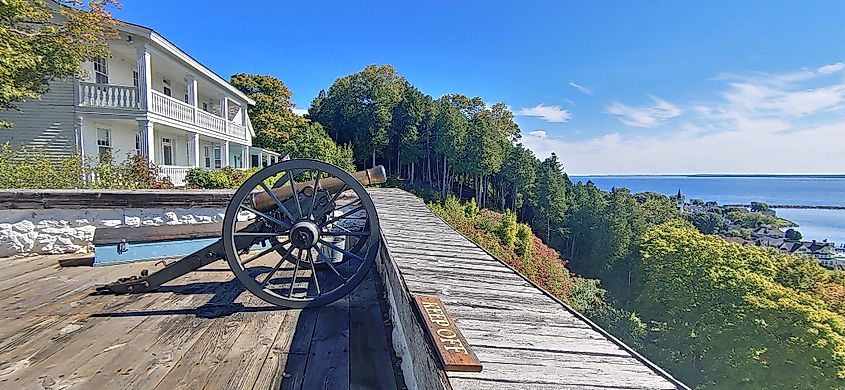
Preserved as a living museum, Fort Mackinac showcases 19th-century military life with reenactments and historical exhibits. Nearby, the Biddle House and the McGulpin House illustrate domestic life in the early 1800s. The Mission Church (1829), the oldest surviving church in Michigan, stands as another architectural treasure.
The Richard and Jane Manoogian Mackinac Art Museum occupies the restored Indian Dormitory and displays centuries of island-inspired artwork. The Mission Point resort area houses a museum with maritime exhibits, lighthouse history, and memorabilia from the filming of Somewhere in Time, a romantic film shot largely on the island.
Culture, Festivals, and Fudge
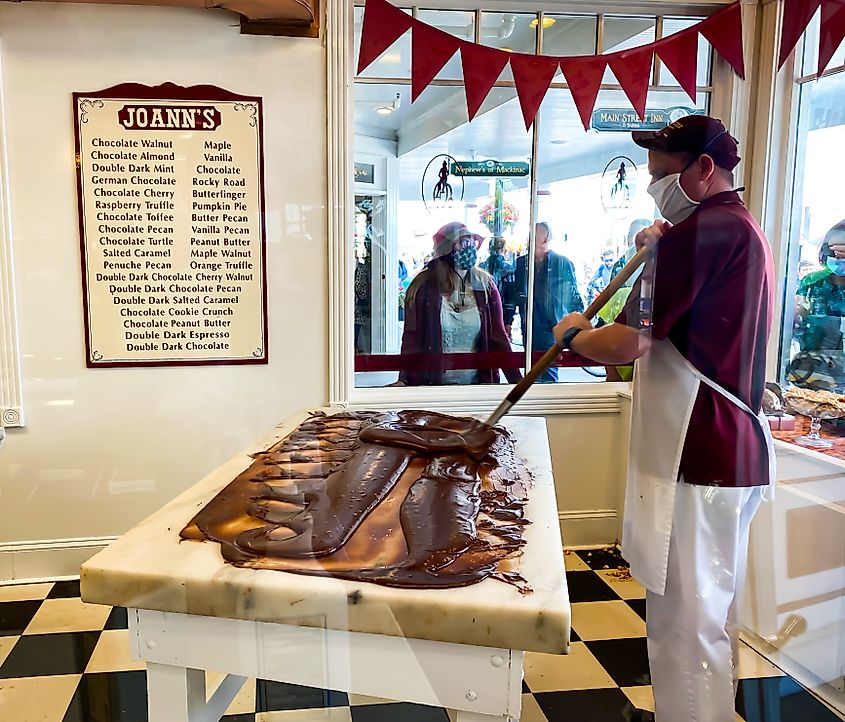
Mackinac Island thrives with annual cultural events. The Lilac Festival in June celebrates the island’s fragrant blooms with a horse-drawn parade. Equestrian tradition is honored again during the Epona Festival, with blessings of horses and stables.
Perhaps most famously, Mackinac is synonymous with fudge. A long-standing sweet tradition that began in the 1800s, the island is home to over a dozen fudge shops. Tourists known affectionately as "fudgies" line up to sample fresh batches made on marble slabs, drawn in by the scent wafting through Main Street.
Planning Your Visit
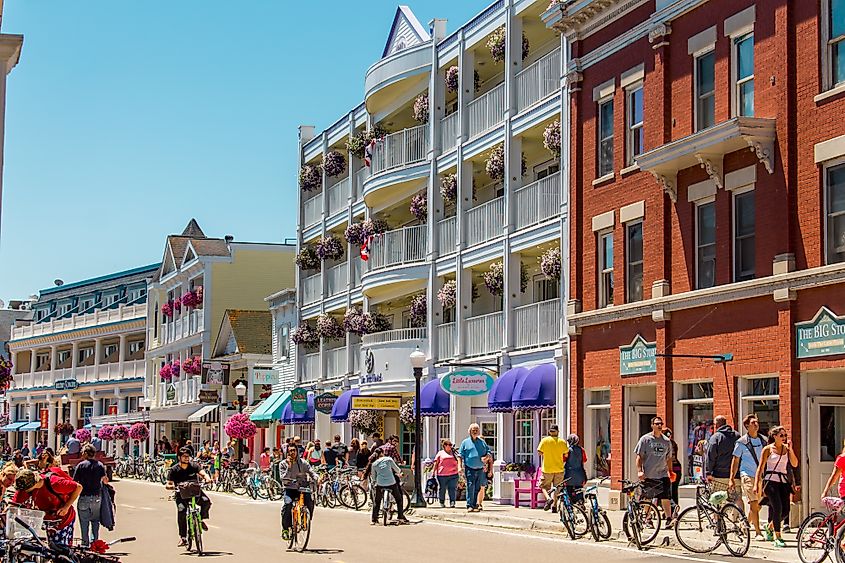
Mackinac Island is a seasonal destination, bustling from May through October. Ferries run daily during these months, with several operators offering transport from St. Ignace and Mackinaw City. Once on the island, visitors can choose from over 1,500 rooms, from historic inns and bed-and-breakfasts to the famed Grand Hotel.
Dining options range from cozy taverns to fine dining establishments, many with views of the lake or harbor. Bicycles and carriages are available for rent, and guided tours help visitors make the most of the island's rich history and scenery.
While camping is not allowed, the island’s accommodations provide ample options for all budgets. The island also supports conferences, weddings, and family reunions, all in a timeless, car-free setting.
A Living Time Capsule
Whether you're interested in American history, Indigenous heritage, natural beauty, or simple serenity, Mackinac Island offers it all in one compact, unforgettable package. With its commitment to preservation and its deep-rooted cultural traditions, this island remains one of the most distinctive destinations in the United States, a true living time capsule on the waters of Lake Huron.
